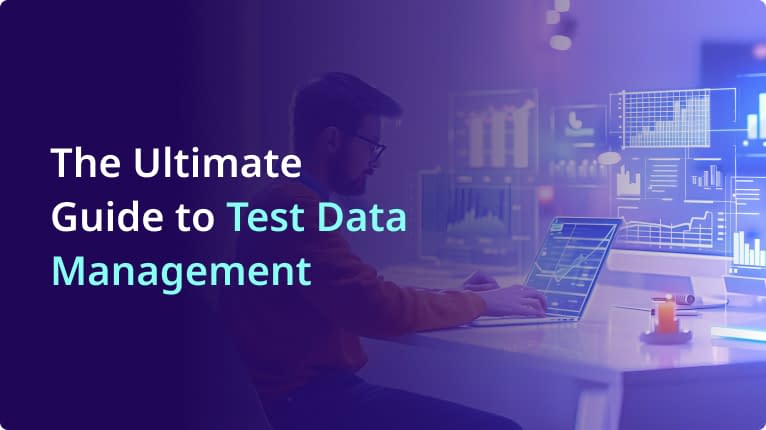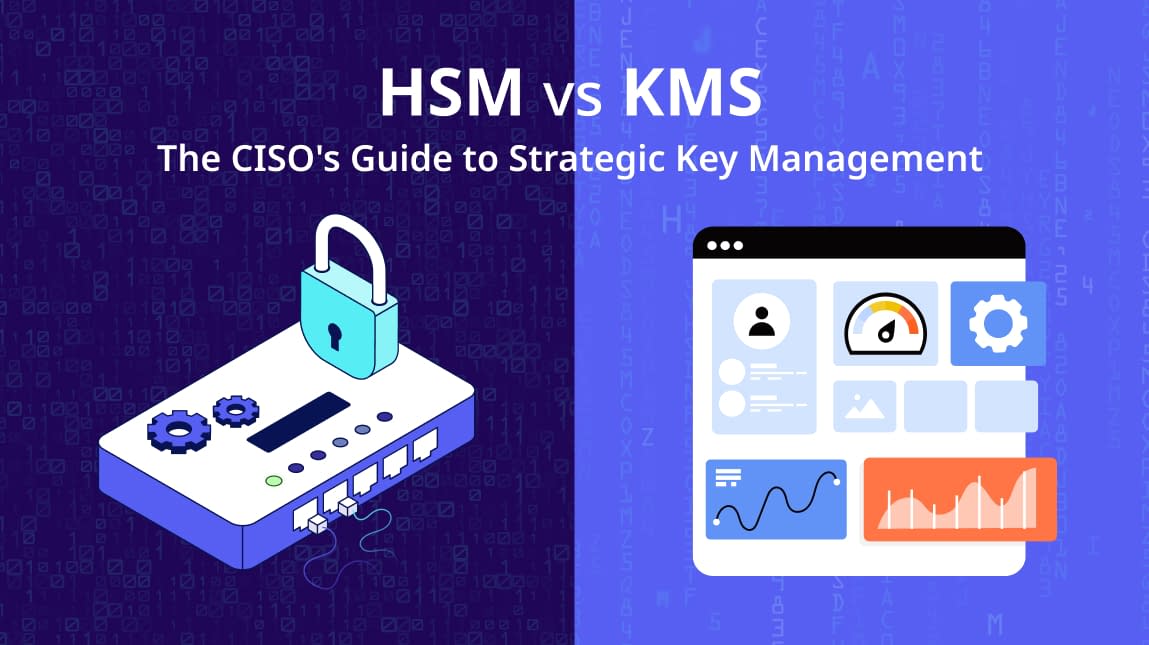In 2024, over 22% of data breaches involved compromised data in development, test, or staging environments, which are often overlooked in traditional security frameworks. The constant demand for accurate and timely data has driven many DevOps teams to repurpose production data for development and testing, despite the significant security and compliance risks this creates.
But it doesn’t have to be this way.
According to Forrester Research, organizations can reduce their risk of data breaches by up to 70% by implementing a modern Test Data Management (TDM) platform with built-in masking, subsetting, and synthetic data generation capabilities. In doing so, they not only protect sensitive information but also ensure continual compliance with data privacy regulations like GDPR, HIPAA, CCPA, PCI DSS, and more.
This guide provides a comprehensive overview of Test Data Management: from core concepts and implementation strategies to its essential role in modern Agile and DevOps environments. You’ll learn how a mature TDM program accelerates testing, enhances quality, and ensures airtight data privacy.
What is Test Data Management (TDM)?
Test Data Management (TDM) is the process of discovering, provisioning, and managing data for development and quality assurance across the non-production stages of the software development lifecycle (SDLC). The objective is to deliver high-quality, realistic, and secure datasets that enable effective testing without putting sensitive production data at risk.
DevOps Data Challenges
Without a structured TDM program, teams face serious risks and inefficiencies:
- Data Privacy & Compliance Risks: Using unmasked production data in test environments violates regulations like GDPR, CCPA, HIPAA, and PCI DSS. Non-compliance can result in data breaches, fines, and reputational damage.
- Testing Bottlenecks: Finding or creating appropriate data manually delays releases. Test coverage is limited when data isn’t aligned to test case requirements.
- Poor Data Quality: Manually generated or stale test data often lacks referential integrity and doesn’t accurately reflect production complexity, causing missed bugs.
- Infrastructure Costs: Full copies of production databases consume storage and inflate cloud or hardware costs, especially when used across large teams or microservices architectures.
How Test Data Management Solves DevOps Challenges
Test Data Management (TDM) directly addresses the core barriers DevOps teams face by streamlining access to secure, high-quality data at every stage of the development pipeline. Here’s how:
- Enforces Data Privacy & Regulatory Compliance: Modern TDM platforms include automated data discovery and static data masking tools that identify and de-identify sensitive data in development and test environments. These capabilities ensure compliance with GDPR, HIPAA, CCPA, PCI DSS 4.0, and other data privacy regulations, without slowing down the software delivery process.
- Accelerates Test Cycles and CI/CD Pipelines: TDM eliminates the wait time associated with manually crafting test data or cloning full databases. Teams can rapidly provision fresh, targeted datasets through data subsetting or on-demand masking, which integrates seamlessly with CI/CD workflows. This reduces time-to-test and enables true continuous testing.
- Improves Test Coverage with Realistic Data: Unlike manually generated test data, synthetically generated and especially masked datasets retain production-like complexity and referential integrity. This allows DevOps teams to uncover bugs that would otherwise escape detection until late in the SDLC—or worse, in production.
- Reduces Infrastructure and Data Costs: Instead of replicating massive production databases for every developer, TDM enables lightweight, referentially intact subsets to be shared across teams. These subsets are smaller in size but rich in functionality, significantly reducing the compute and storage burden on infrastructure.
Test data management platforms address the data needs of DevOps teams while helping your organization remain secure and compliant. Advanced static data masking techniques can preserve all of the attributes and relationships of the source data while anonymizing all sensitive fields. Additionally, synthetic data generation can produce large volumes of realistic, artificial test data, often exceeding what’s available in production environments, without exposing any personally identifiable information (PII).
Key Concepts in Test Data Management
A robust TDM strategy is powered by several key technologies and processes. The typical test data management process involves sensitive data discovery followed by subsetting and then static data masking. The sensitive data discovery process discovers and classifies data across both structured and unstructured data sources. Data subsetting extracts referentially intact, smaller slices of data for testing purposes; this reduces the size of test environments, lowering costs. Finally, static data masking replaces sensitive data values with realistic, anonymized data while maintaining functional and statistical integrity.
In recent years, synthetic data generation has emerged as an alternative and complement to traditional discovery and masking processes. Synthetic data generation typically involves using either programmed data rules or AI models to generate fake data that resembles the data within production environments.
Next, let’s explore each of these concepts in more detail and understand the role they play in the test data management lifecycle.
Sensitive Data Discovery
Data discovery is the foundational step in test data management. It involves scanning data sources to identify and classify sensitive information, such as Personally Identifiable Information (PII), financial records, health data (PHI), or proprietary business information.
Key capabilities include:
- Automated scanning across relational databases, NoSQL systems, flat files (e.g., CSV, XML), and cloud storage.
- Classification algorithms that label data based on regulatory categories (e.g., “GDPR – Sensitive,” “PCI – Cardholder Data”).
- Pattern and rule-based detection using regex, AI/ML, or dictionaries to identify sensitive fields.
- Data lineage mapping to track how sensitive data flows between systems.
You can’t protect what you don’t know exists. Discovery enables precise masking, subsetting, and tokenization by pinpointing sensitive data. Beyond test data management use cases, sensitive data discovery is also frequently used for compliance, auditing and analytics purposes.
Data Subsetting
Data subsetting refers to extracting a smaller, relevant slice of the full production database while preserving referential integrity and key data relationships. This reduces storage requirements, accelerates test environment setup, and minimizes the risk of exposing unnecessary sensitive data.
Subset types:
- Vertical subsets: Extract specific columns (fields) based on privacy or business rules. For example, retaining only customer names and contact details while omitting sensitive identifiers like SSNs.
- Horizontal subsets: Select rows based on logical conditions or filters. For example, extracting a list of customers based in California for CCPA compliance purposes.
- Referentially intact subsets: Ensure child and parent table relationships are preserved across foreign keys. For example, if a subset includes an order, all related order line items, payments, and shipment records are included.
Subsetting works well when paired with masking to create a smaller, sanitized dataset for dev/test with full production complexity.
Static Data Masking
Static Data Masking (SDM) is the process of creating a de-identified, yet realistic and functional copy of a production database. Unlike dynamic data masking, which alters data only at query time and is primarily used for role-based data access in live environments, SDM creates a persistent, anonymized dataset that can be safely used in development, QA, and training environments.
Key stages:
- Discover: Identify sensitive elements using data discovery tools.
- Classify: Map sensitive fields to masking policies.
- Mask: Apply irreversible transformations while preserving realism.
- Provision: Deploy masked datasets to target environments.
There are a number of different static data masking techniques; however, only a few are recommended for test data management purposes:
|
Technique |
Description |
Recommended for TDM? |
|---|---|---|
|
Substitution |
Replaces original values with realistic-looking data from predefined libraries. |
Yes |
|
Format-Preserving Masking |
Maintains the same format and structure (e.g., SSNs, credit card numbers). |
Yes |
|
Date Aging |
Adjusts dates by a consistent offset to retain intervals and time-based logic. |
Yes |
|
Shuffling |
Randomly reorders data within a column. Breaks real-world relationships. |
Typically, no |
|
Redaction |
Replaces sensitive data with a fixed value or placeholder (e.g., “XXX-XX-1234”). |
No |
|
Encryption |
Obscures data using keys. Typically reversible and not human-readable. |
No |
The primary goal of SDM in test data management is to strike a balance between security and realism: preserving data structure and behavior while eliminating risk. Typically, only data substitution, format-preserving masking and date aging are recommended for test data management purposes. Testing and development works best when leveraging realistic data sets that have the same structure, attributes and relationships as the original. Techniques such as shuffling, redaction and encryption fundamentally change the data in ways that make them unsuitable techniques for test data management use cases.
Tokenization
Tokenization is the process of replacing sensitive data elements with unique, non-sensitive values called tokens, while maintaining the same data format and structural integrity. The original data is securely stored and can only be retrieved using a controlled mapping mechanism, making tokenization an effective technique for maintaining privacy without compromising functionality.
Unlike static data masking, which irreversibly transforms data, tokenization is reversible but only through access to the token vault or algorithm, depending on the implementation. This makes tokenization ideal for use cases that require a return path to the original data under strict controls.
Use cases in TDM:
- Testing apps that need to preserve uniqueness constraints (e.g., email, credit card number).
- Enabling secure round-tripping (e.g., data sent back to production-like environments).
- Ensuring reversibility for specific workflows (e.g., customer service debugging).
Vaulted vs Vaultless Tokenization
- Vault-based (persistent): Lookup table stores token-original value mappings.
- Vaultless (algorithmic): Deterministic mapping using cryptographic or hashing algorithms.
Accutive Security’s test data management platform ADM offers vaultless tokenization, and vaulted tokenization is offered through our partnership with Thales.
Tokenization is more secure than encryption or reversible masking, but may require additional infrastructure.
Synthetic Data Generation
Synthetic data generation involves creating artificial datasets that mimic the structure, format, and statistical properties of real-world data, without ever using actual production data. Unlike static data masking or tokenization, which transform existing records, synthetic data is created from scratch. This approach is increasingly valuable in modern Test Data Management (TDM) strategies where data privacy, flexibility, and scalability are top priorities.
There are several methods used to generate synthetic data:
- Rule-based generation: Creates values based on predefined constraints and logic. For example, generating valid ZIP codes, email formats, or date ranges.
- Statistical simulation: Produces data based on statistical models derived from real datasets, such as distributions of account balances, age groups, or purchase amounts.
- AI/ML-based generation: Uses machine learning models trained on production data to replicate data structure, behavior, and field correlations, without reproducing any individual records.
Synthetic data offers several advantages. It enables testing of edge cases and new features where production data does not yet exist. It supports infinite scalability, making it ideal for performance testing and high-volume simulations. It is also fully customizable, allowing teams to test negative scenarios, outliers, or rare combinations of inputs that may be difficult to capture in real data. Importantly, because synthetic data contains no actual personal or sensitive information, it avoids the regulatory burdens associated with data privacy laws such as GDPR, HIPAA, and PCI DSS.
However, synthetic data also comes with some important caveats. While it can approximate the structure and statistical properties of production data, it may lack the real-world complexity, anomalies, or unexpected data patterns that are common in live systems. In some cases, particularly for systems that rely on complex referential integrity, legacy constraints, or unpredictable user-entered content, synthetic data may fail to reproduce edge-case bugs or integration issues.
Building a TDM Strategy: A Step-by-Step Framework
A successful Test Data Management (TDM) strategy requires more than just tools. It demands coordination across teams, alignment with business goals, and a clear roadmap for implementation. The following step-by-step framework outlines the foundational components of a strong TDM program.
Identify Stakeholders
Begin by involving all relevant stakeholders, including Development, QA, DevOps, Security, Compliance, and Data Governance teams. Each group brings different perspectives and requirements to the table. For example, developers may need fast data access for unit testing, while compliance officers focus on regulatory adherence. Engaging stakeholders early ensures that the TDM solution aligns with both technical and organizational priorities.
Define Data Requirements
Clearly document the types of test cases that need to be supported. Consider whether teams require production-like data or synthetic data for edge cases. Identify dependencies across systems, required data volumes, and the level of data freshness needed. It is also important to determine whether tests need consistent datasets across multiple environments or microservices, as this will influence how data is generated and provisioned.
Run Data Discovery
Use automated discovery tools to scan your data estate and identify sensitive fields, such as personally identifiable information (PII), financial data, or health records. In addition to classification, discovery tools help map data relationships and lineage, which is critical for preserving referential integrity when masking or subsetting. This step also provides the foundation for compliance with data protection regulations.
Select the Right Tools
Choose a TDM platform that supports a wide range of capabilities, including static data masking, tokenization, data subsetting, synthetic data generation, and automation. Evaluate whether the platform integrates with your existing technology stack and supports key environments such as relational databases, NoSQL systems, cloud platforms, and containerized applications.
Automate Provisioning
Integrate TDM processes into your CI/CD pipeline to allow development and QA teams to self-serve test data on demand. Automation reduces bottlenecks, eliminates manual steps, and ensures that teams have access to up-to-date, compliant datasets whenever needed. This is especially critical in Agile and DevOps environments where speed and repeatability are essential.
Monitor and Optimize
Track the performance of your TDM program using measurable KPIs. Key metrics include test data provisioning time, test coverage, defect detection rates, infrastructure utilization, and compliance audit success rates. Regular monitoring allows teams to fine-tune their TDM processes and demonstrate return on investment to leadership.
Test Data Management for Agile and DevOps
Test Data Management must evolve to meet the needs of modern software delivery practices. Agile and DevOps teams operate in fast-paced environments that require frequent, reliable, and compliant access to test data.
In Agile development, teams work in short, iterative sprints that demand rapid provisioning of test data. TDM enables just-in-time data generation and provisioning for each sprint cycle, helping teams avoid delays and meet release deadlines.
DevOps environments rely on continuous integration and continuous delivery (CI/CD) pipelines to automate code integration, testing, and deployment. For these pipelines to operate effectively, test data must be accurate, consistent, and available at every stage. TDM platforms support this requirement by integrating directly with CI/CD tools and providing version-controlled test data sets for repeatable testing.
Shift-left testing is another critical trend in both Agile and DevOps. It emphasizes the need to perform testing earlier in the software development lifecycle. This approach depends heavily on having secure, production-like test data available to developers and testers at the earliest stages of development. A mature TDM program enables this by delivering masked or synthetic data that mirrors production systems without introducing risk.
By aligning TDM with Agile and DevOps principles, organizations can improve test coverage, accelerate release cycles, and reduce the risk of introducing defects into production.
Key Trends in Test Data Management
As Test Data Management continues to evolve, several key trends are reshaping the way organizations approach data provisioning and compliance.
AI-Enhanced Data Synthesis
Machine learning models are being increasingly used to generate synthetic data that closely mirrors production patterns without replicating actual values. These models help simulate realistic user behavior, uncover edge cases, and train AI/ML systems using high-quality, privacy-preserving datasets. Overall, AI/ML use cases are one of the largest drivers of the demand for test data management platforms.
PrivacyOps Integration
TDM solutions are being integrated into broader enterprise data governance frameworks. This ensures that test data policies are consistent with organizational privacy standards and that compliance is maintained throughout the data lifecycle.
Policy-as-Code
Organizations are embedding data masking, subsetting, and provisioning rules directly into version-controlled codebases. This practice ensures that TDM policies are auditable, repeatable, and aligned with DevSecOps workflows.
These trends reflect the growing importance of Test Data Management as a foundational capability within secure, scalable software delivery pipelines.
Secure, Usable Test Data
Test Data Management is a critical enabler of modern DevOps and SecDevOps. With the rise of privacy regulations, the increasing complexity of systems, and the need for rapid, reliable testing, organizations are searching for test data management platforms and strategies that combine speed, security, and scalability. Accutive Security originally developed ADM as a discovery and masking solution for test data management use cases in regulated industries. As our platform has evolved, the platform has expanded with data subsetting, tokenization and synthetic data generation. While many legacy data discovery and masking tools are an afterthought of a larger data software suite, ADM receives regular updates and new features to keep it on the leading edge of test data management.
By implementing best practices across data discovery, static data masking, tokenization, data subsetting, and synthetic data generation, teams can provision high-quality, compliant test data without compromising performance or privacy. A well-executed TDM program enables faster development cycles, improves software quality, and reduces the risk of costly data breaches or regulatory violations.
Organizations that take control of their test data today will be better positioned to innovate, comply, and deliver with confidence tomorrow.











Comment